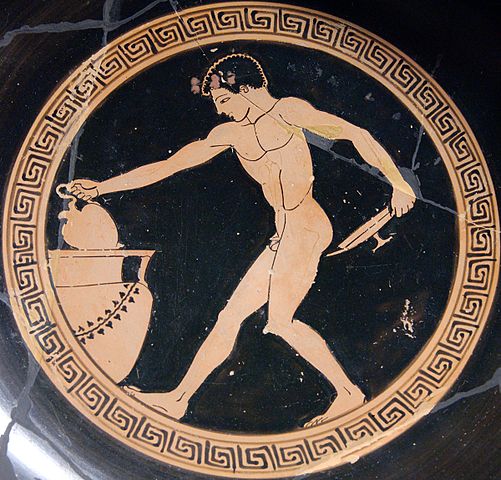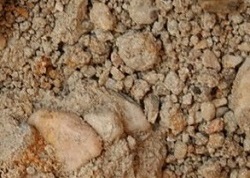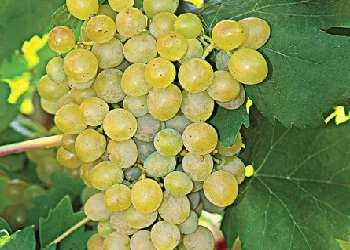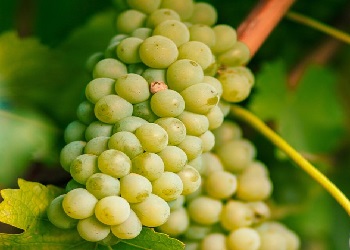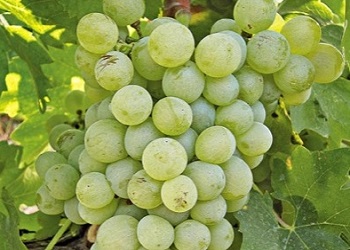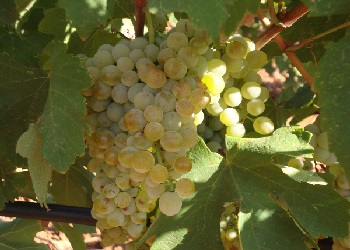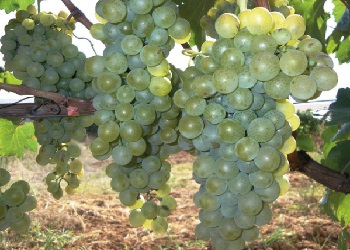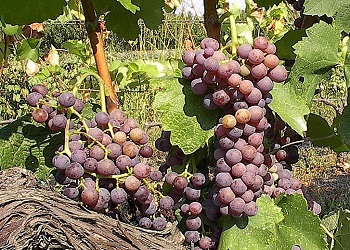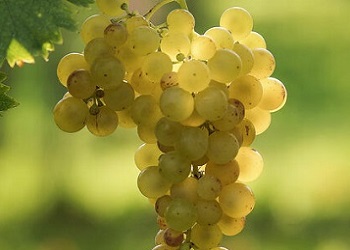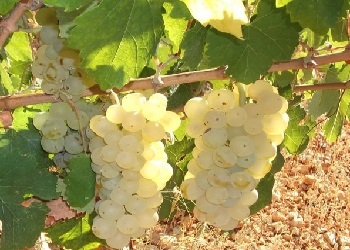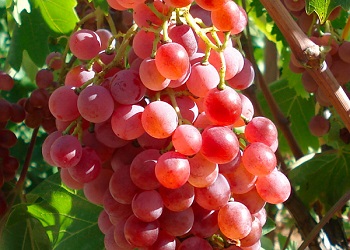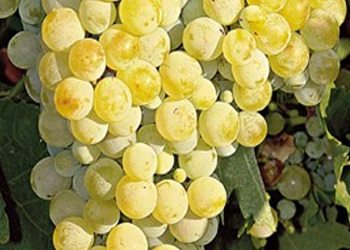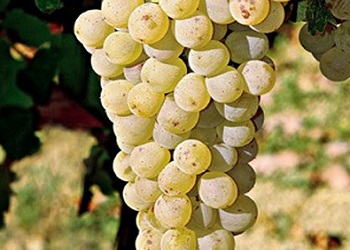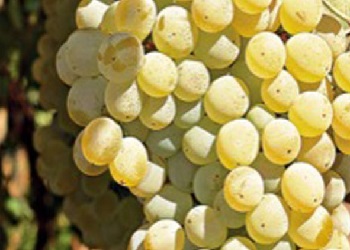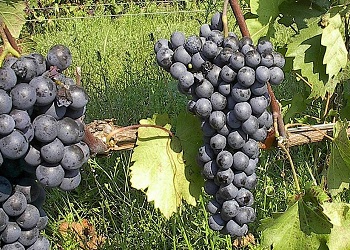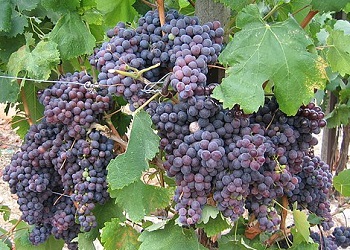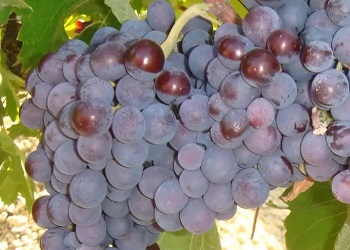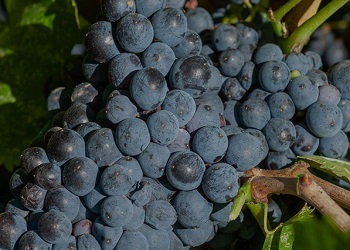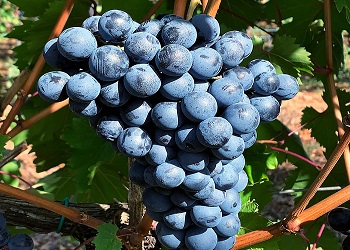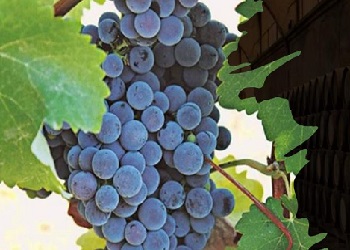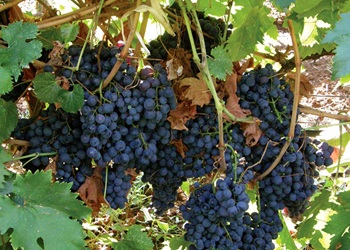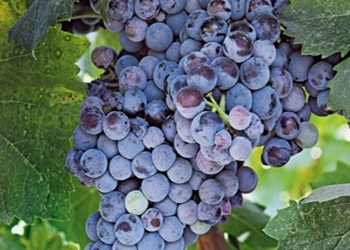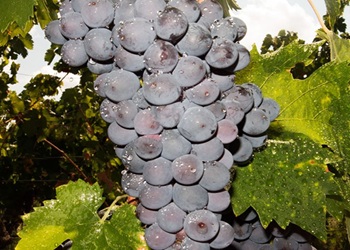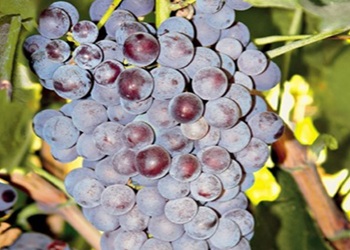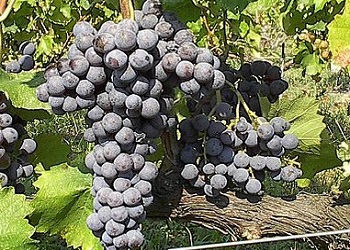Greek Wine
Greece has one of the longest winemaking and wine drinking histories in the world, with many Wine Regions that offer a diverse array of indigenous grape and wine styles.
20 Greek regions is awarded an PDO (OPAP) classification for quality wine. The most famous are:
The white Assyrtiko from Santorini.
The red Agiorgitiko from Nemea.
The red Xinomavro from Naoussa.
The ancient Greek Symposium (drink together) was a banquet where drinking for pleasure was accompanied by music, dancing, recitals, and conversations. (see picture).
It was the ancient Greeks who taught the French and the Italians how to make wine.
Red Wines |
White Wines |
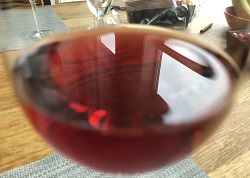
|

|
Greece Classifications
OPAP - "Onomasía Proelefséos Anotéras Piótitos" (designation of origin of higher quality), was the classification for Greek wine quality until 2009. OPAP wines are marked with a red banderole across the cork.
OPE - "Onomasía Proelefséos Eleghoméni" (controlled designation of origin) was a level identical to OPAP, but with added requirements regarding sugar content. OPE wines are marked with a blue banderole across the cork.
PDO is the EU wine market regulation since 2009. It covers both OPAP and OPE.
The most famous PDO/OPAP regions:
PDO Santorini (1971)
PDO Nemea (1971)
PDO Mantina (1971)
PDO Naoussa (1971)
PDO Amynteo (1972)
Listed Regions:
Macedonia
Thessaly
Epirus
Aegean Islands
Peloponnese
Crete
Attica
Ionian
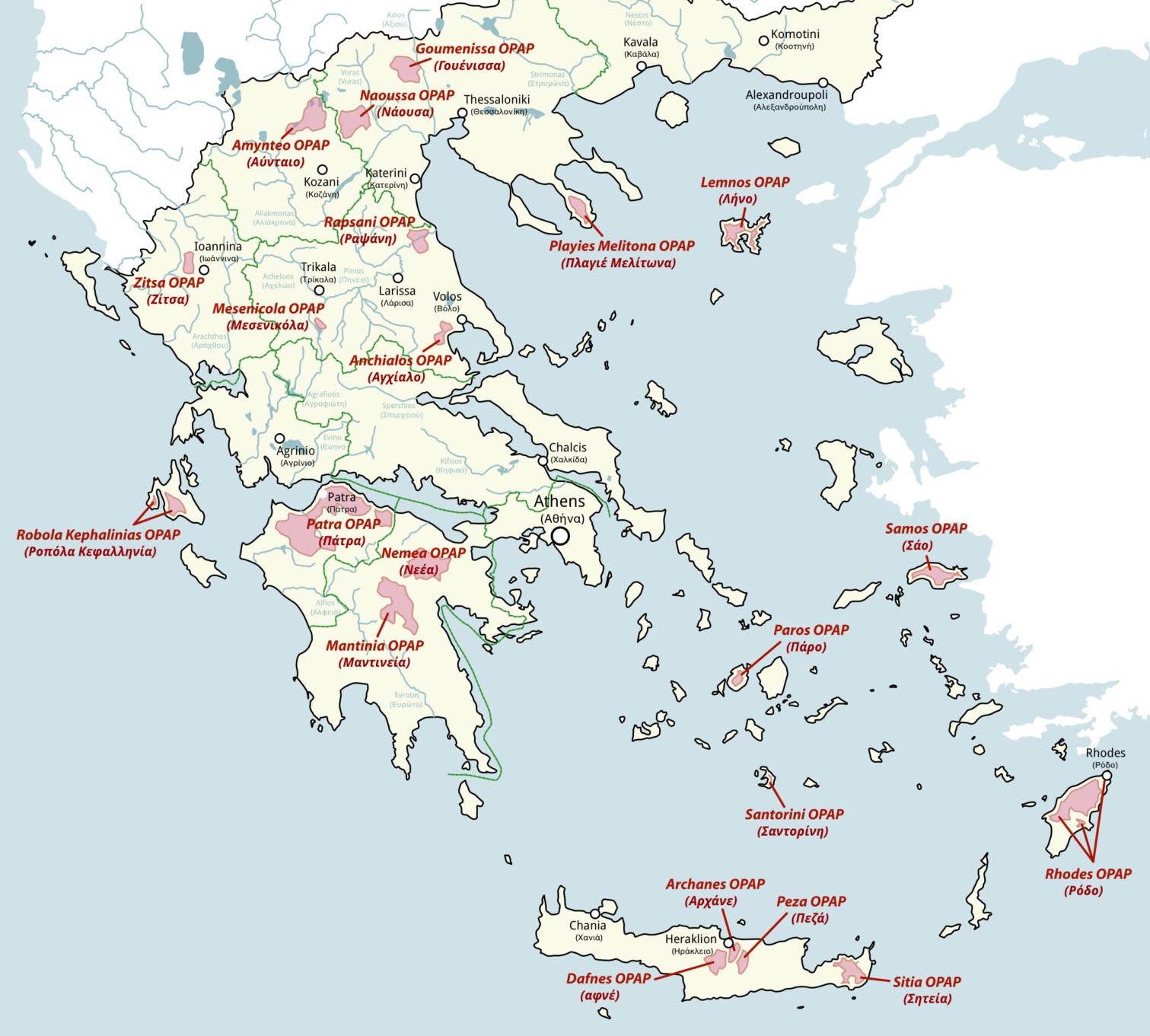
Central Macedonia
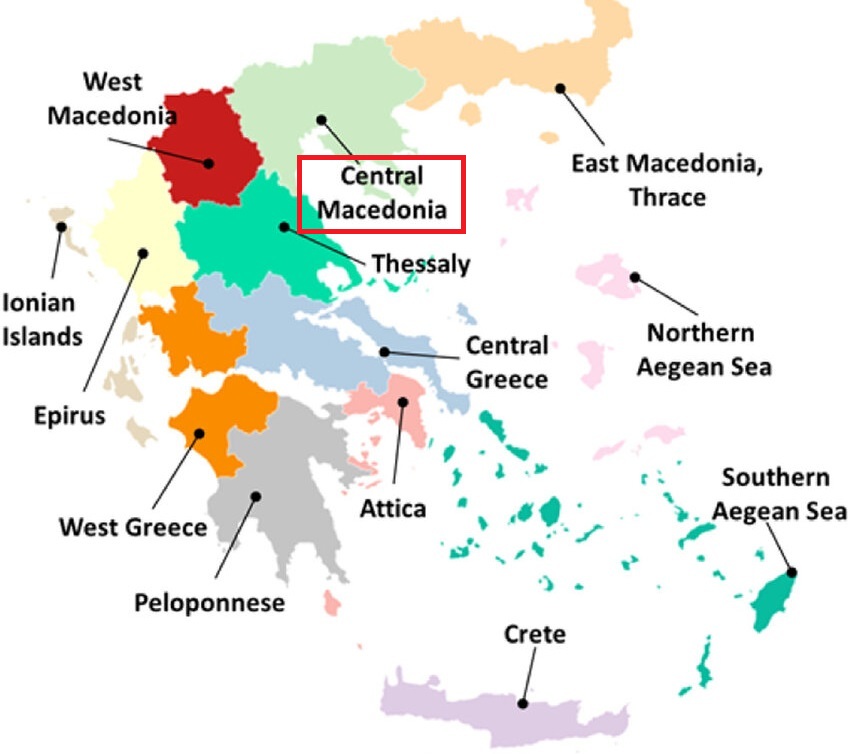
Macedonia Wines
Macedonia, located in the north of Greece, is famous for its red wines made exclusively from the Xinomavro grape.
These wines are often compared to Nebbiolo from Italy, displaying bold tannins, high acidity, and flavors of dark fruits, tomatoes, and spices.
Naoussa PDO and Amynteo PDO in Macedonia, and Rapsani PDO in Thessaly, are considered the top expressions of the Xinomavro grape in Greece.
Black Grapes |
White Grapes |
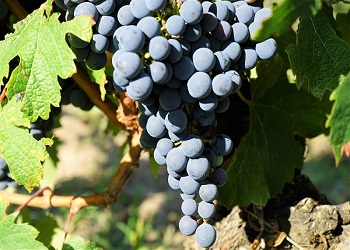
|
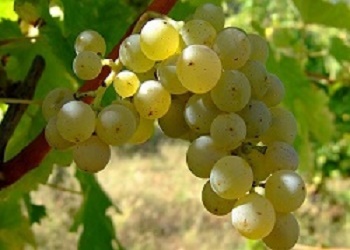
|
Soil |
Climate |

Heavy textured soils. |
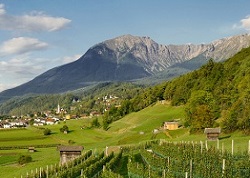
Mediterranean |
PDO Regions
Central Macedonia has 4 PDO regions:
PDO Naoussa (1971)
PDO Amynteo (1972)
PDO Goumenissa (1979)
PDO Slopes of Meliton (1982)
PDO Naoussa (ΠΟΠ Νάουσα)
Naoussa is Greece's most important Xinomavro region.
It is known for producing robust, age-worthy red wines with notes of red fruit, earth, and sometimes hints of olives or sun-dried tomatoes.
PDO Requirements:
Dry Red:
100% Xinomavro
Semi-Dry Red:
100% Xinomavro
Semi-Sweet Red:
100% Xinomavro
PDO Amynteo (ΠΟΠ Αμύνταιο)
Amynteo is also one of the great Xinomavro terroirs.
Located near Naoussa but at a higher altitude, Amynteo is known for its Xinomavro wines, including both reds and sparkling rosés. The cool climate brings a more delicate expression of Xinomavro, often with a red berry profile, and the sparkling wines from the area have gained attention for their finesse and unique character.
PDO Requirements:
Dry Red:
100% Xinomavro
Dry Rosé:
100% Xinomavro
Sparkling Dry:
100% Xinomavro
Sparkling Semi-Dry Rosé:
100% Xinomavro
PDO Goumenissa (ΠΟΠ Γουμένισσα)
The addition of the Negoska grape makes Goumenissa wines softer and intensifies the color and the alcohol content.
PDO requirements:
Dry Red:
Max 80% Xinomavro
Min 20% Negoska
PDO Slopes of Meliton (ΠΟΠ Πλαγιές Μελίτωνα)
PDO requirements:
Dry White:
50% Athiri
35% Roditis
15% Assyrtiko
Dry Red:
70% Limnio
30% Cabernet Sauvignon or Cabernet Franc
Drama and Kavala
Drama and Kavala have no PDO regions, but they are still considered two of the most significant viticultural regions of Greece. Pioneering producers in this area have created some of the most special and interesting Greek wines.
Dramas is known for elegant and aromatic white wines made from Assyrtiko grapes.
Kavala is known for award winning wines based on Assyrtiko and Semillon, on par with best white Bordeaux.
Wine Region Thessaly
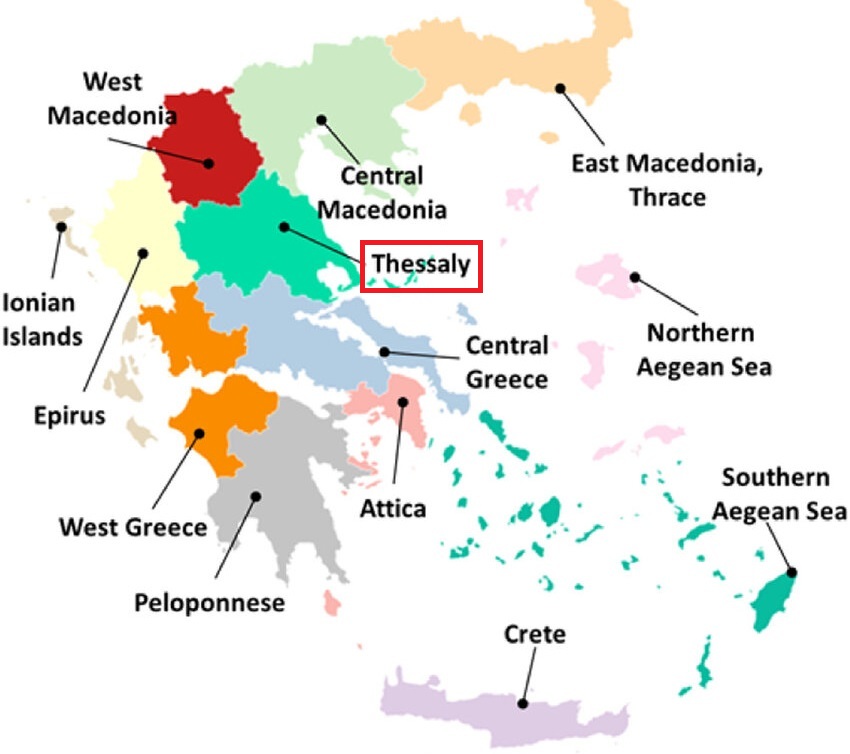
Black Grapes |
White Grapes |

|

|
Soil |
Climate |
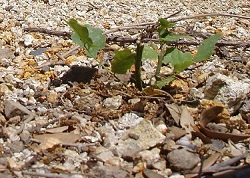
Sandy Clay. |

Mediterranean |
Thessaly Wines
Thessaly wines range from full bodied reds from Xinomavro and Messenikola grapes, to aromatic and fresh whites from Roditis grapes.
Thessaly is also known for high-quality red wines from the Limniona grape.
Thessaly PDO Regions
Thessaly (Central Greece) has 3 PDO regions:
PDO Anchialos (1971)
PDO Messenikola (1994)
PDO Rapsani (1971)
PDO Anchialos (ΠΟΠ Αγχίαλος)
PDO requirements:
Dry White from min 80% Roditis + Savatiano.
Medium Dry White from min 80% Roditis + Savatiano.
Medium Sweet White from min 80% Roditis + Savatiano.
PDO Mesenikola (ΠΟΠ Μεσενικόλα)
PDO requirements:
Dry Red from min 70% Messenikola
and max 30% Carignan + Syrah.
PDO Rapsani (ΠΟΠ Ραψάνη)
PDO Rapsani is one of the 4 PDO zones for Xinomavro.
PDO requirements:
Dry Red from Xinomavro, Krassato and Stavroto.
Wine Region Epirus
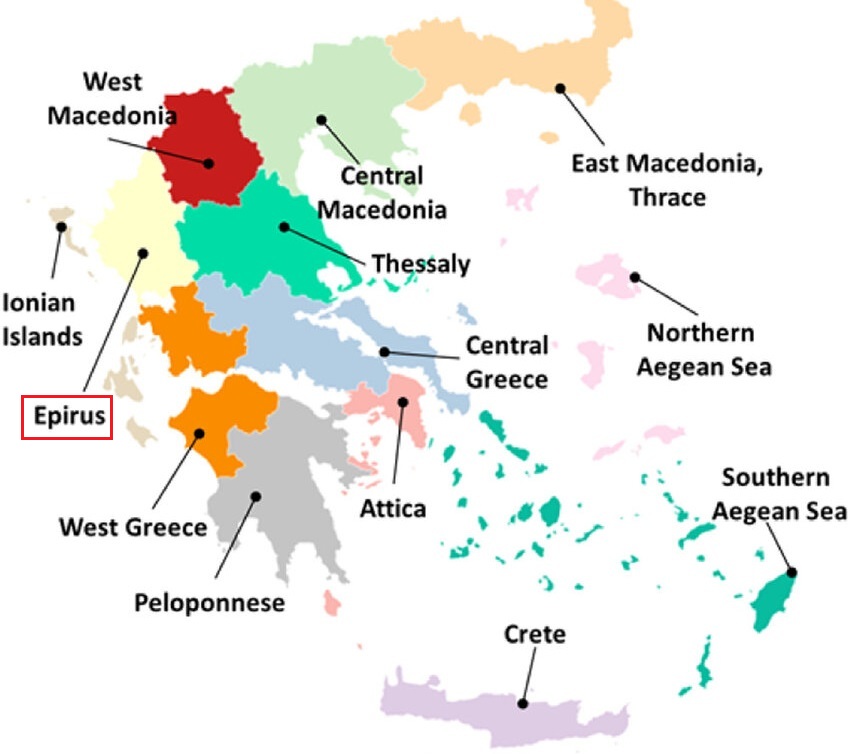
Black Grapes |
White Grapes |

Vlachiko |

|
Soil |
Climate |

Limestone. |

Continental. |
Epirus Wines
Epirus is located in the Northwest of Greece. It has a more continental type of climate, compared to the majority of the Greek wine regions that have a Mediterranean climate.
High altitudes contribute to a humid and cool climate. Epirus experiences heavy snow falls and very cold temperatures in the winters.
The grapes ripe very slowly and retain much of their acidity. This makes Epirus an interesting producer of sparkling wines.
PDO Regions
Epirus has only 1 PDO region:
PDO Zitsa (ΠΟΠ Ζίτσα)
Established 1972
PDO requirements:
Grape: Debina 100%
Wines:
- Dry White
- Sparkling Dry White
- Sparkling Semi-Dry White
Debina makes excellent white wines full of freshness, which is best showcased in the sparkling wines.
Aegean Islands
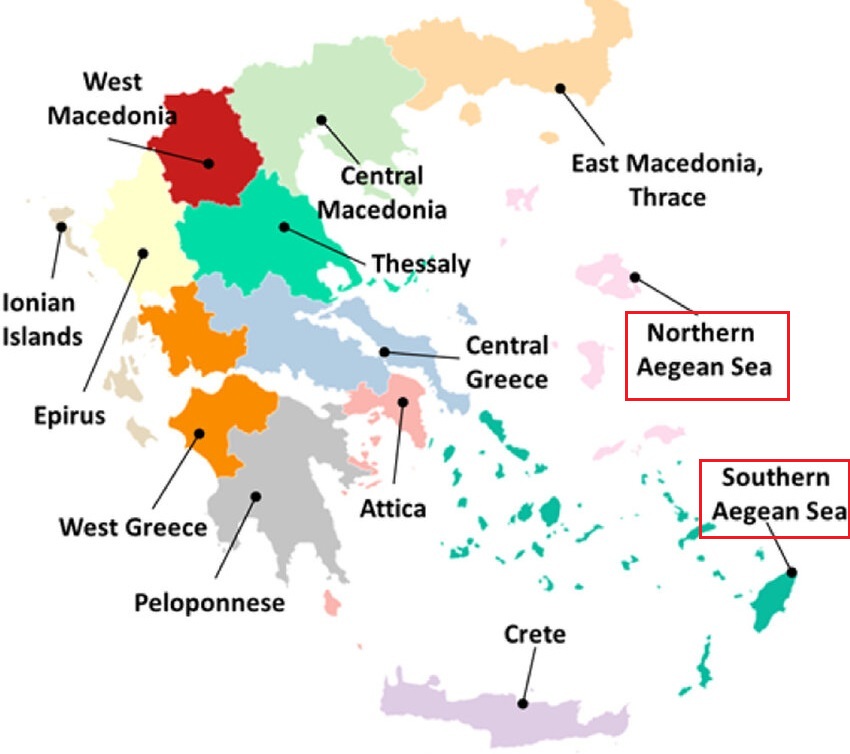
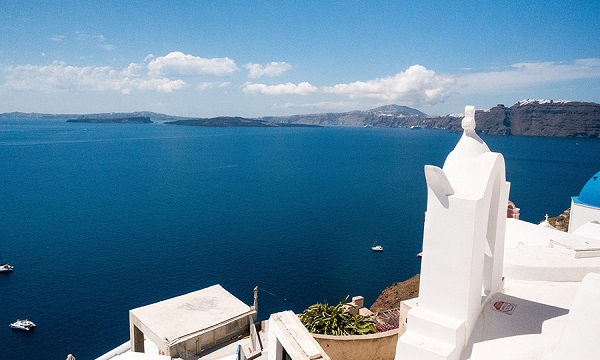
Black Grapes |
White Grapes |

|

|
Soil |
Climate |

Schist. |
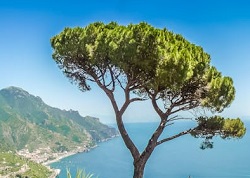
Mediterranean. |
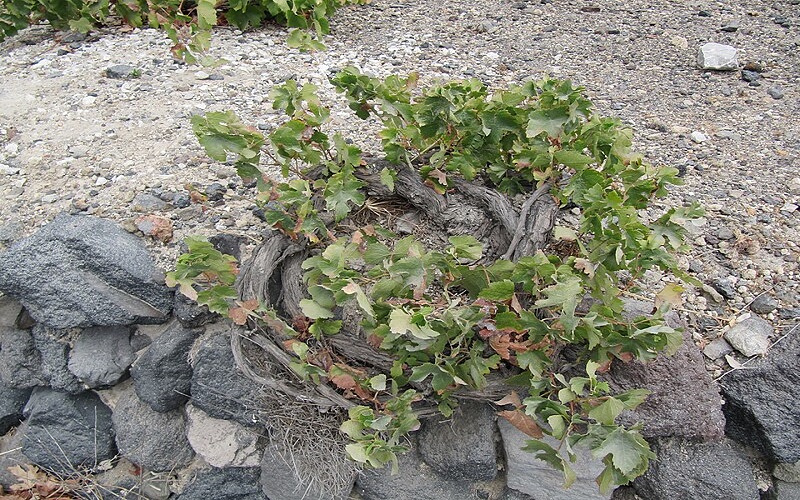
Santorini vines trained to the ground in a basket shape, to protect the grapes from heat and wind.
Aegean PDO Regions
Aegean Islands (East Mediterranean) has 5 PDO regions:
PDO Santorini (1971)
PDO Rhodos (1971)
PDO Lemnos (1982)
PDO Paros (1981)
PDO Samos (1970)
PDO Santorini (ΠΟΠ Σαντορίνη)
This picturesque island is one of Greece's most unique wine regions. Volcanic soil and strong winds contribute to the cultivation of grapes like Assyrtiko, which produces crisp, mineral-driven white wines with citrus and floral notes.
PDO Santorini allows for 85% Assyrtiko and 15% of Athiri and Aidani. However, most PDO Santorini is made from 100% Assyrtiko.
PDO Santorini has a unique profile, clearly showing the terroir. The wines are powerful and intense, bursting with sea-salt minerality. Not aromatic but steely with a depth of citrus fruit, and a high level of acidity and alcohol
PDO requirements:
Dry White from min 85% Assyrtiko + Athiri / Aidani.
Sweet White from min 51% Assyrtiko + Athiri / Aidani.
PDO Rhodes (ΠΟΠ Ρόδος)
Phylloxera existed on Rhodes, but had difficulties to spread in the a terrain. As a result, on the altitudes of Mount Attavyros there are numerous self-rooted Phylloxera immune vines of advanced age.
Rhodes is the leader and main source of Greek bottled-fermented sparkling wines. CAIR Brut is a famous sparkling wine produced by the local grape Athiri, using the French traditional method.
PDO requirements:
Red from min 70% Amorgiano + Mavrothiriko.
Rosé from min 70% Amorgiano + Mavrothiriko.
White from min 70% Athiri + Assyrtiko and Malagousia.
Amorgiano is the local name for the Mandilaria grape.
PDO Samos (ΠΟΠ Σάμος)
The White Muscat wine from Samos is often referred to as Muscat Samos since the grape is associated with the island.
Muscat is also found in four other Greece PDO wines: PDO Muscat of Rhodes. PDO Muscat of Cephalonia. PDO Muscat of Patras. PDO Muscat of Rio Patras.
PDO requirements:
Sweet White from 100% Muscat (Sun-dried).
Sweet White Fortified from 100% Muscat.
PDO Lemnos (ΠΟΠ Λήμνος)
Lemnos (Limnos) in the northern Aegean Sea is where the white grape Muscat of Alexandria is widely cultivated.
PDO requirements:
Dry White from 100% Muscat of Alexandria.
Medium-Dry White from 100% Muscat of Alexandria.
Medium-Sweet White from 100% Muscat of Alexandria.
Dry Red from 100% Limnio.
Sweet Red from 90% Limnio (sun-dried) and 10% Muscat.
Sweet Fortified Red from 90% Limnio and 10% Muscat.
Wine Region Peloponnese
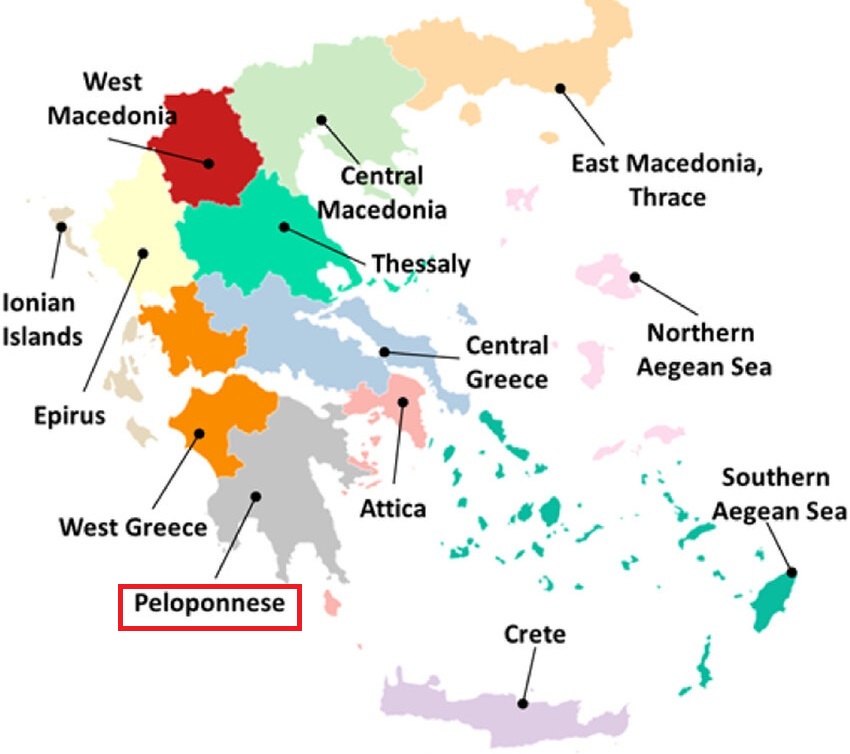
Black Grapes |
White Grapes |

|

|
Soil |
Climate |
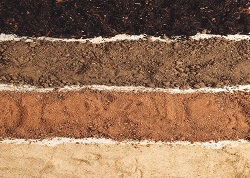
Fertile Sandy-Loam. |

Mediterranean |
Peloponnese PDO Regions
Peloponnese (South Greece) has 3 PDO regions:
- PDO Nemea (1971)
- PDO Mantinia (1971)
- PDO Patra (1972)
PDO Nemea (ΠΟΠ Νεμέα)
Nemea is producing some of Greece's finest red wines.
Often called the "Bordeaux of Greece", Nemea produces rich, fruit-forward reds from Agiorgitiko, one of Greece’s most popular grape varieties, known for its deep red color, robust tannins, and rich flavors of red fruits and spices.
PDO requirements:
Dry Reds from 100% Agiorgitiko.
Semi-Sweet Reds from 100% Agiorgitiko.
Fortified Reds from 100% Agiorgitiko.
Sweet Reds from 100% Agiorgitiko (sun dried).
PDO Mantinia (ΠΟΠ Μαντινεία)
Located in the cool, mountainous Peloponnese, Mantinia is known for Moschofilero, a pink-skinned grape producing aromatic, floral white wines. These wines are typically light, refreshing, and aromatic, with hints of rose petal and citrus, making them versatile with a variety of dishes.
PDO requirements:
Dry whites from min 85% Moschofilero + Asproudes.
Sparkling wines from min 85% Moschofilero + Asproudes.
PDO Patra (ΠΟΠ Πάτρα)
PDO requirements:
Dry Whites from 100% Roditis.
Medium-Dry Whites from 100% Roditis.
Medium-Sweet Whites from 100% Roditis.
Wine Region Crete
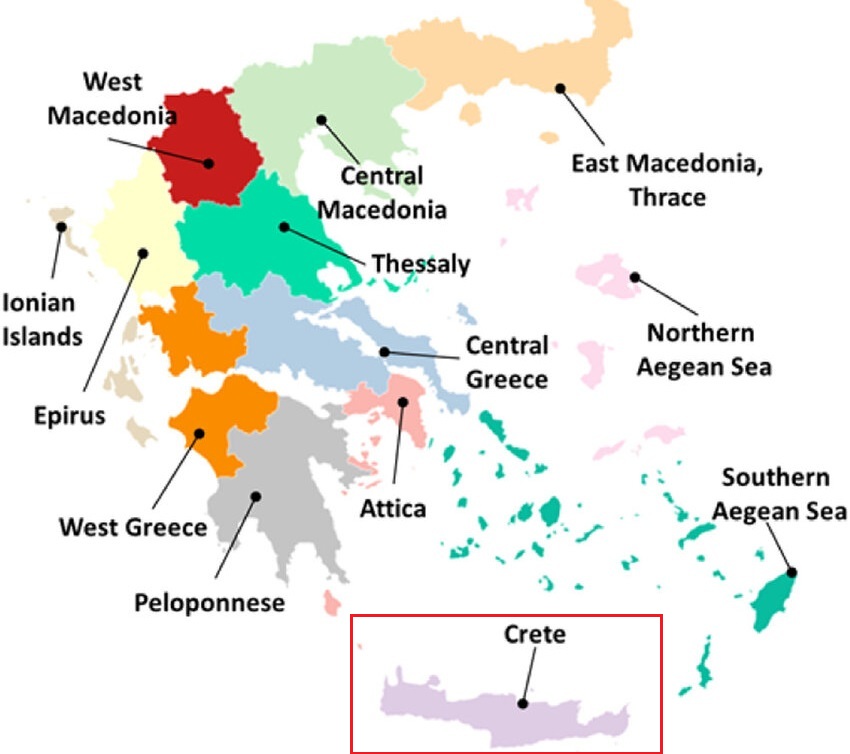
Black Grapes |
White Grapes |

|

|
Soil |
Climate |
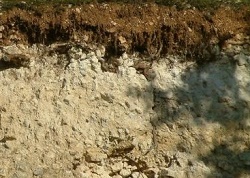
Fertile. |

Hot. |
Crete PDO Regions
Crete is the largest Greek island. It has a long winemaking history, dating back thousands of years, with an array indigenous grapes:
Liatiko is used to make both dry and sweet red wines, often with a light to medium body and hints of dried fruit.
Kotsifali, often blended with Mandilaria, creates balanced, fruit-forward reds.
Vilana is the most important white grape of the island.
Vidiano is an emerging star. It produces high-quality wines with moderate acidity and complex aromas of peach, apricot, melon, herbs and honey.
Crete as 4 PDO regions created in 1971:
PDO Archanes (ΠΟΠ Αρχάνες)
Dry Reds from Kotsifali and Mandilaria
PDO Dafnes (ΠΟΠ Δαφνές)
Dry Reds from 100% Liatiko
Sweet Red from 100% sun-dried Liatiko
Sweet Red from 100% fortified Liatiko
PDO Peza (ΠΟΠ Πεζά)
Dry Reds from Kotsifali and Mandilaria
Dry Whites from 100% Vilana
PDO Sitia (ΠΟΠ Σητεία)
Dry Reds from min 80% Liatiko and Mandilaria
Dry Whites: from 70% Vilana and 30 Thrapsathiri
Sweet Reds from 100% sun-dried Liatiko
Sweet Reds from 100% fortified Liatiko
Wine Region Attica
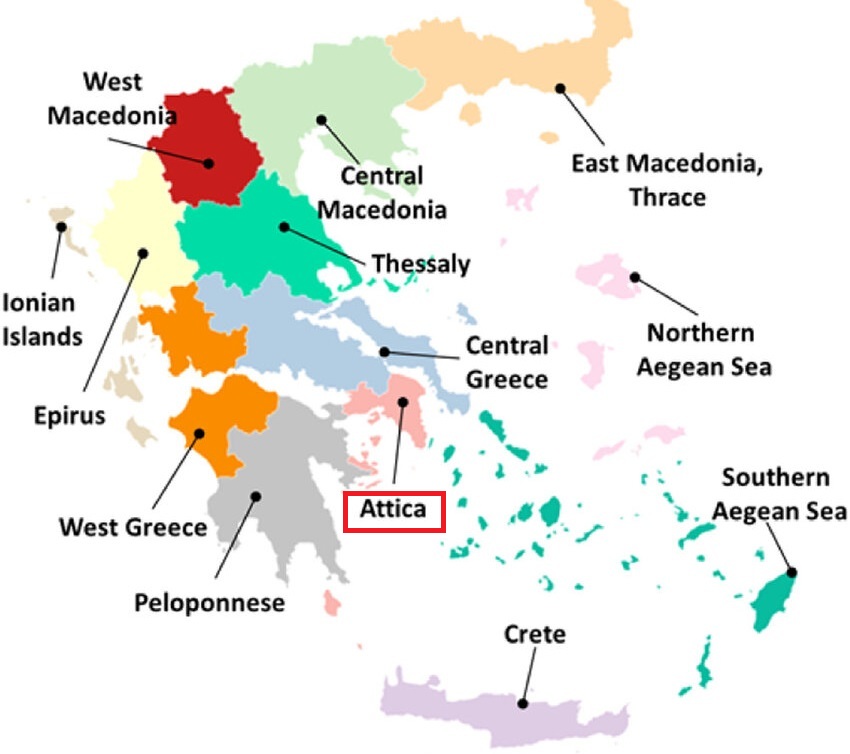
Attica is located on the edge of the Aegean Sea, north of Peloponnese.
The region is home to the city of Athens.
Known for the production of Retsina, a wine flavored with pine resin.
The traditional grape for retsina is Savatiano with Assyrtiko and Rhoditis sometimes blended in.
Attica also produces quality wines from the Savatiano grape, which is naturally resistant to the heat of this region.
Modern versions of Savatiano wines can show a creamy texture with notes of lemon and apple, especially when grown in low-yield vineyards.
Ionian Islands
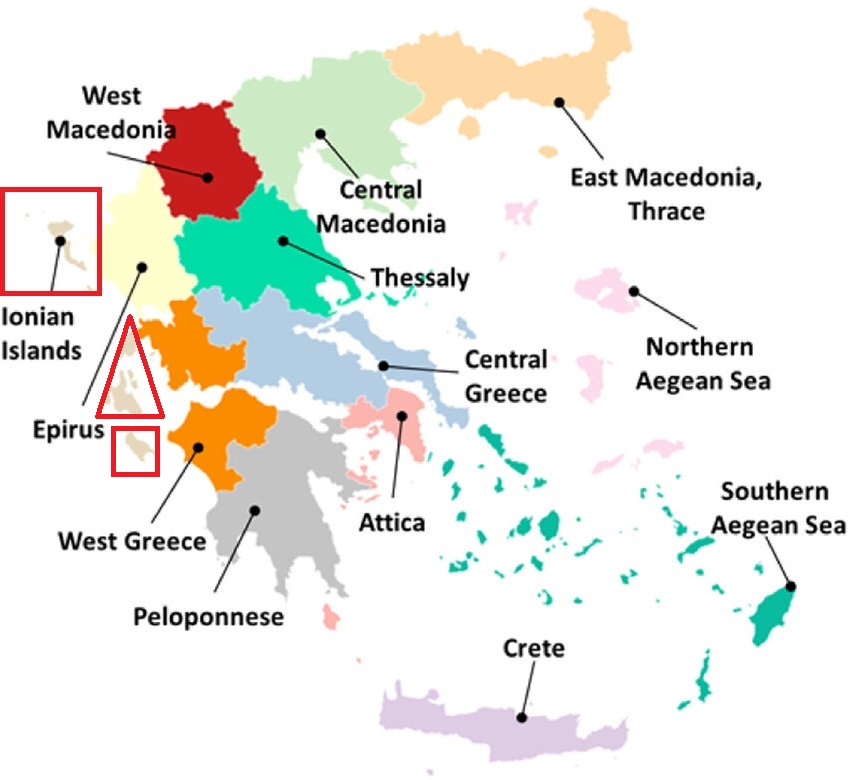

SoilWide Variations.Clay. Limestone. Deep Fertile. Poor Hillsides. Altitudes from 0 to 800m. |

ClimateMediterrean.High Rainfall. Humidity Problems. |
Ionian PDO Regions
The Ionian Islands wine region is located in the Ionian Sea along the west coast of Greece.
The 7 Ionian Islands include Corfu, Paxos, Lefkada, Kefalonia, Ithaca, Zakynthos and Kythira.
The northernmost island is Corfu and the southernmost island is Zakynthos west of the Peloponnese Peninsula.
The wines from the Ionian Islands are primarily made from native grapes such as Kakotrygis, Vertzami and Robola.
The island Ithaca is famous for being the home of Odysseus, from the Odyssey epic poem of Homer, where he writes about the wines from the islands of Kefalonia and Corfu.
The Odyssey drescibes a viticulture at least 2500 years back in history.
PDO Wines
- PDO Robola of Kefalonia
- PDO Mavrodaphne of Kefalonia
- PDO Muscat of Kefalonia
Black Grapes |
White Grapes |

|

|
